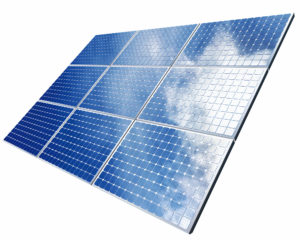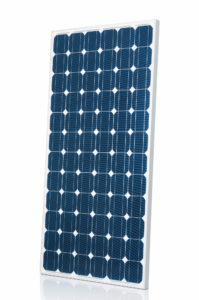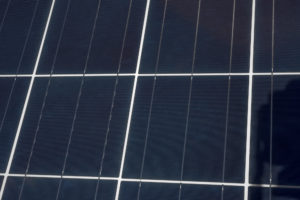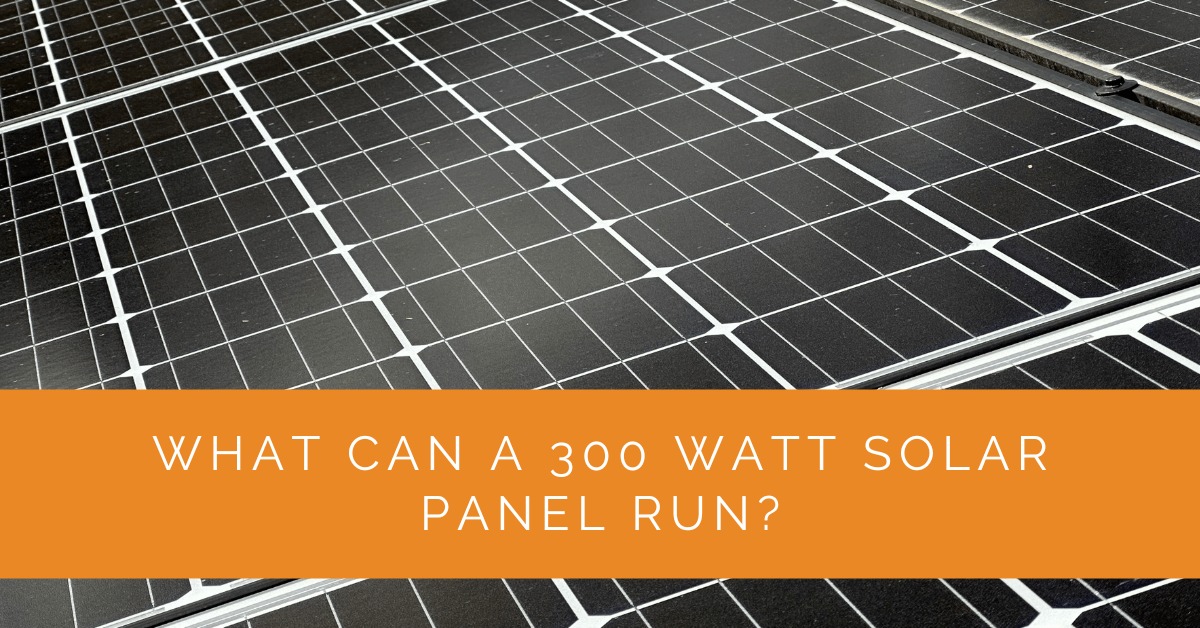In the realm of solar power, understanding the capabilities of a 300 watt solar panel is essential. With its moderate power output, a 300 watt solar panel can provide significant energy. This comprehensive guide will explore the possibilities of a 300 watt solar panel and discuss the appliances and devices it can effectively power. By the end, you will have a clear understanding of how to harness the potential of this solar solution.
Contents
- 1 Key Takeaways
- 2 Understanding Solar Panel Wattage
- 3 Factors Influencing Solar Panel Output
- 4 Calculating Solar Panel Output
- 5 Power Consumption of Common Appliances
- 6 Estimating Power Consumption
- 7 What a 300 Watt Solar Panel Can Run
- 8 Optimizing Energy Usage
- 9 Off-Grid vs. Grid-Tied Systems
- 10 System Design Considerations
- 11 Case Study: Harnessing the Potential of a 300 Watt Solar Panel
- 12 Expert Insights From Our Solar Panel Installers About What a 300 Watt Solar Panel Can Run
- 13 Experience Solar Excellence with Us!
- 14 Conclusion
Key Takeaways
- A 300 watt solar panel has the potential to power various appliances and devices, including lighting, small electronics, fans, communication devices, and some small appliances, depending on their power consumption.
- Real-world conditions, such as shading, temperature, and panel orientation, can impact the actual output of a solar panel, so it’s essential to understand these factors when assessing its performance.
- Choosing between an off-grid or grid-tied solar system, optimizing energy usage, and proper system design are critical considerations when using a 300 watt solar panel effectively.
Understanding Solar Panel Wattage
To comprehend the capabilities of a 300 watt solar panel, it is crucial to grasp the concept of solar panel wattage. Solar panel wattage represents the panel’s power output, indicating the amount of energy it can generate under standard test conditions. A 300 watt solar panel, for instance, can produce up to 300 watts of power in ideal conditions.
When we talk about solar panel wattage, it refers to the maximum output the panel can achieve. However, it is important to understand that real-world conditions often differ from ideal conditions. Factors such as sunlight availability, shading, temperature, and the orientation and tilt angle of the panel affect its performance and, consequently, its actual power output.
Factors Influencing Solar Panel Output
To fully grasp the potential of a 300 watt solar panel, it is important to understand the various factors influencing its output. The performance of a solar panel is closely tied to the environmental conditions in which it operates. Sunlight availability is a key factor that directly affects the power output. A panel exposed to direct sunlight will generate more electricity than a partially or completely shaded one.
Shading has a significant impact on solar panel output. Even a small shading on a portion of the panel can significantly reduce its efficiency. It is crucial to ensure that the solar panel is installed in a location with minimal shading throughout the day to maximize energy production.
Temperature also plays a role in solar panel performance. While solar panels generate electricity from sunlight, high temperatures can decrease efficiency. Solar panels work more efficiently in cooler conditions, and excessive heat can reduce their output. Therefore, it is important to consider ventilation and airflow around the panels to prevent overheating.
The orientation and tilt angle of the solar panel is other critical factors that affect its output. The panel should be oriented towards the sun’s path, typically facing south in the northern hemisphere and north in the southern hemisphere, to maximize exposure to sunlight. Additionally, adjusting the tilt angle based on the geographic location and the season can optimize energy production.
Understanding these factors and their influence on solar panel output will help you set realistic expectations regarding the performance of a 300 watt solar panel in your specific location.

Calculating Solar Panel Output
While a 300 watt solar panel has a specified wattage, it is important to understand that the actual power output may vary due to real-world conditions. Several factors need to be considered to estimate the solar panel’s output in your specific location.
First, the solar panel’s wattage is a significant factor. A 300 watt solar panel, under ideal conditions, can produce up to 300 watts of power. However, actual output may be affected by shading, temperature, and panel orientation.
Solar panel manufacturers provide a power tolerance range, typically around +/- 3%, indicating the potential variation in the panel’s output. This range accounts for variations in manufacturing and measurement processes.
Another factor to consider is the solar panel’s efficiency. Solar panels have different efficiencies, determining how effectively they convert sunlight into electricity. Higher-efficiency panels can generate more electricity from the same amount of sunlight than lower-efficiency panels.
The sunlight available in your location is crucial in estimating solar panel output. It varies based on geographical location and the time of year. Locations closer to the equator generally receive more sunlight throughout the year than those farther away. Additionally, weather conditions, such as cloudy or overcast days, can reduce the sunlight reaching the solar panel, affecting its output.
You can use tools like solar irradiance maps or online calculators to estimate the solar panel’s output. These tools consider factors such as your location, tilt angle, and orientation to provide an estimate of the solar panel’s energy production potential. However, remember that these estimates are based on average conditions and may not account for variations in real-world scenarios.
It is important to note that solar panel output is typically measured in kilowatt-hours (kWh) over a given period rather than just the instantaneous wattage. This reflects the energy production capacity of the panel over time and helps in understanding the panel’s overall performance and its ability to meet your energy needs.
Power Consumption of Common Appliances
To determine what a 300 watt solar panel can power, it is crucial to understand the power consumption of common household appliances. Appliances and devices have different energy requirements, typically measured in watts or kilowatts. By assessing the power consumption of these appliances, you can gauge whether a 300 watt solar panel can meet your needs.
Common household appliances have varying power demands. For instance, LED or CFL light bulbs usually consume between 5 to 15 watts per bulb, while refrigerators can range from 100 to 400 watts, depending on their size and efficiency. Small electronics like smartphones and tablets consume around 5 to 20 watts during charging, and televisions can range from 50 to 200 watts, depending on their size and technology.
It’s important to note that the power consumption of appliances can vary based on their make, model, and usage patterns. Always refer to the manufacturer’s specifications or energy labels for accurate power consumption information.

Estimating Power Consumption
Estimating power consumption involves calculating the amount of energy an appliance or device consumes over a specific period. By multiplying the wattage of an appliance by the number of hours it is used per day, you can determine the energy consumption in watt-hours or kilowatt-hours.
For example, if a 60-watt light bulb is used for 5 hours a day, the daily energy consumption would be 60 watts * 5 hours = 300 watt-hours or 0.3 kilowatt-hours (kWh). Similarly, if you have a refrigerator with a power consumption of 150 watts that runs for 24 hours, the daily energy consumption would be 150 watts * 24 hours = 3,600 watt-hours or 3.6 kWh.
To estimate your overall energy consumption, consider the power consumption of all the appliances and devices you plan to power with your 300 watt solar panel. Summing up the energy consumption of each device will give you an idea of the total energy requirements per day.
It’s important to note that energy-efficient appliances and practices can significantly reduce overall power consumption, allowing you to power more devices with a 300 watt solar panel.
What a 300 Watt Solar Panel Can Run
A 300 watt solar panel can power various appliances and devices, making it a versatile option for various applications. While the exact combination and number of devices that can be powered by a 300 watt solar panel will vary depending on their power consumption, here are some examples of what it can potentially run:
- Lighting: Depending on their wattage, LED or CFL light bulbs can be powered by a 300 watt solar panel. You can illuminate multiple rooms or outdoor spaces with energy-efficient lighting.
- Small Electronics: Devices such as smartphones, tablets, laptops, and small electronics like radios or portable speakers can be easily powered by a 300 watt solar panel. These devices typically have lower power requirements and can be charged directly from the panel or through a power bank.
- Fans and Ventilation: Energy-efficient fans, both ceiling and floor models, can be powered by a 300 watt solar panel. They provide cooling and ventilation in your living spaces, making them comfortable even in hot weather conditions.
- Communication Devices: Communication devices like routers, modems, and cordless phones can be powered by a 300 watt solar panel. These devices have relatively low power requirements and can be essential for staying connected in remote or off-grid locations.
- Small Appliances: Various small appliances like blenders, coffee makers, and toasters with lower power requirements can be operated using a 300 watt solar panel. However, it is important to check the power consumption of each specific appliance to ensure it falls within the panel’s capacity.
It’s important to note that the power output of a 300 watt solar panel can vary depending on the environmental conditions and the time of day. Peak power output is typically achieved midday when the sun reaches its highest point. Shading, temperature, and panel orientation can affect the panel’s performance and overall energy production.
Optimizing Energy Usage
To make the most of a 300 watt solar panel, optimizing energy usage is crucial. You can maximize the available energy by implementing energy-efficient practices and managing power consumption effectively. Here are some strategies to consider:
- Energy-Efficient Appliances: Invest in energy-efficient appliances that have lower power requirements. Look for appliances with high energy star ratings or energy labels indicating efficiency.
- LED Lighting: Replace traditional incandescent bulbs with energy-efficient LED bulbs. LED bulbs consume significantly less energy while providing the same light, making them an excellent choice for solar-powered systems.
- Power Management: Practice power management by turning off appliances and devices when they are not in use. Unplug chargers and electronics that continue to draw power even when not actively being used.
- Timers and Smart Controls: Utilize timers and smart controls to schedule the operation of appliances and devices. This helps optimize their usage and reduces unnecessary power consumption.
- Insulation and Energy Conservation: Improve the insulation of your home or living space to reduce heating and cooling requirements. Proper insulation helps maintain a comfortable environment while minimizing energy demands.
- Education and Awareness: Educate household members about energy-saving practices and conserving power. Simple habits like turning off lights when leaving a room or adjusting thermostat settings can significantly impact energy consumption.
By implementing these strategies, you can ensure that the energy generated by your 300 watt solar panel is efficiently utilized, allowing you to power more devices and appliances.

Off-Grid vs. Grid-Tied Systems
When considering a 300 watt solar panel, it is important to understand the difference between off-grid and grid-tied systems. Each has its considerations and implications:
- Off-Grid Systems: In an off-grid solar system, a 300 watt solar panel can be the primary power source for your appliances and devices. It can charge batteries to store energy for use during periods of low sunlight or at night. Off-grid systems are ideal for remote locations or areas with unreliable or no access to the electrical grid.
- Grid-Tied Systems: In a grid-tied system, a 300 watt solar panel can supplement your energy needs by feeding excess power back to the electrical grid. This allows you to offset your electricity consumption and reduce utility bills. Grid-tied systems are suitable for areas with reliable grid connectivity and may require additional components like a grid-tied inverter.
The decision to opt for an off-grid or grid-tied system depends on your specific needs and circumstances. Off-grid systems offer energy independence and suit those seeking to live completely off the grid. They require additional components, such as batteries and charge controllers, to store and manage the generated energy.
On the other hand, grid-tied systems provide the advantage of utilizing the electrical grid as a backup power source. Excess energy generated by the 300 watt solar panel can be fed back into the grid, potentially earning you credits or reducing your overall electricity costs. Grid-tied systems do not require batteries, making installing them simpler and more cost-effective.
It is important to consult with solar energy professionals or experts to assess your requirements and determine the most suitable system. They can guide you through the design and installation process, ensuring that you make informed decisions and maximize the benefits of your 300 watt solar panel.
System Design Considerations
To effectively utilize a 300 watt solar panel, proper system design is crucial. Consider the following factors:
- Solar Panel Array: If you require more power than a 300 watt solar panel can provide, you can create an array by connecting multiple panels. This increases the total power output and allows you to meet higher energy demands.
- Inverter Capacity: The inverter converts the direct current (DC) electricity produced by the solar panels into usable alternating current (AC) electricity. Ensure that the inverter you choose has a capacity that can handle the power output of your 300 watt solar panel or array.
- Battery Storage: Incorporate a battery storage system to store excess energy for later use. This allows you to harness the power generated by the solar panel during the day and use it during periods of low sunlight or at night.
- Load Management: Efficient load management involves distributing the available power from the 300 watt solar panel among your appliances and devices. Prioritize essential loads and balance power usage to ensure the demands do not exceed the panel’s capacity.
- Monitoring and Maintenance: Implement a monitoring system to track the performance of your solar panel and overall system. Regular maintenance, including cleaning the panel surface and checking connections, ensures optimal efficiency and longevity.
Case Study: Harnessing the Potential of a 300 Watt Solar Panel
Background
At Solar Panels Network USA, we were approached by a client looking to power their small off-grid cabin using renewable energy. The client was particularly interested in understanding the capabilities of a 300 watt solar panel and how it could meet their energy needs.
Project Overview
Our objective was to design and implement a solar power system that would efficiently utilize a 300 watt solar panel to meet the client’s energy requirements. This involved assessing the energy consumption of the appliances the client intended to use and ensuring the system design maximized the solar panel’s output.
Implementation
Assessing Energy Consumption
We started by evaluating the power consumption of the client’s essential appliances:
- Lighting: LED bulbs with a total consumption of 60 watts for evening use.
- Small Electronics: A laptop (60 watts) and a smartphone (5 watts) for daily charging.
- Fans: Two small fans (20 watts each) for ventilation.
System Design and Configuration
To maximize the efficiency of the 300 watt solar panel, we focused on optimal system design:
- Positioning and Orientation: We positioned the solar panel to face south, ensuring maximum exposure to sunlight throughout the day.
- Tilt Angle: Adjusted the tilt angle to 30 degrees based on the geographical location to optimize sunlight capture.
- Battery Storage: Integrated a battery storage system with a capacity of 100 amp-hours to store excess energy generated during peak sunlight hours for use at night.
Installation and Optimization
Our team ensured the installation was done professionally, emphasizing key factors:
- Grounding and Safety: Implemented proper grounding techniques to protect the system from electrical surges and potential faults.
- Wiring and Connections: Used high-quality wiring and secure connections to prevent energy losses and ensure system reliability.
- Monitoring System: Installed a monitoring system to track the performance and efficiency of the solar panel and the overall system.
Results
By implementing these strategies, the client successfully harnessed the power of the 300 watt solar panel to meet their energy needs. The system provided reliable energy for essential appliances, ensuring a comfortable and sustainable living environment in the off-grid cabin.
Key outcomes included:
- Sufficient Power Supply: The 300 watt solar panel efficiently powered the client’s essential appliances, providing consistent energy throughout the day and night.
- Energy Independence: The client achieved energy independence, reducing reliance on non-renewable energy sources and minimizing their environmental impact.
- Cost Savings: The use of renewable energy significantly reduced the client’s energy costs, providing long-term financial benefits.
Summary
This case study highlights the effectiveness of a well-designed solar power system utilizing a 300 watt solar panel. By accurately assessing energy consumption, optimizing system design, and ensuring professional installation, Solar Panels Network USA enabled the client to achieve a reliable and sustainable energy solution for their off-grid cabin. The project demonstrates how a 300 watt solar panel can power essential appliances, providing energy independence and long-term cost savings. Our commitment to excellence and customer satisfaction ensures that homeowners can confidently embrace solar energy, harnessing its full potential for a greener future.
Expert Insights From Our Solar Panel Installers About What a 300 Watt Solar Panel Can Run
A 300 watt solar panel can efficiently power small electronics, lighting, and fans. It’s a versatile option for those looking to start their solar journey with essential appliances.
Senior Solar Installer
Understanding the power consumption of your devices is crucial. A 300 watt solar panel can handle a surprising number of appliances if you prioritize energy-efficient models.
Lead Installation Technician
Proper system design and regular maintenance are key to maximizing the output of a 300 watt solar panel. This ensures you get the most from your investment, regardless of your setup.
Chief Energy Consultant
Experience Solar Excellence with Us!
Trust in Solar Panels Network USA, where our seasoned experts deliver top-quality solar solutions for homes and businesses nationwide. With a legacy of countless successful installations and a commitment to sustainable energy, we’re your reliable partner in the solar journey. Ready for a brighter, eco-friendly future? Call us now at (855) 427-0058 and harness the power of the sun!
Conclusion
A 300 watt solar panel can power various appliances and devices, making it a versatile option for various applications. Understanding the factors influencing its output, estimating power consumption, and optimizing energy usage is essential for effectively utilizing the panel’s capabilities. Whether you’re considering an off-grid solar system or looking to offset your energy consumption in a grid-tied setup, a 300 watt solar panel can play a valuable role in harnessing clean, renewable solar energy.
Remember to assess your specific energy needs, consult professionals for system design, and explore the possibility of expanding your solar array for higher power requirements. Embrace the benefits of solar power, reduce your environmental impact, and take a significant step toward a sustainable and energy-efficient future with a 300 watt solar panel.
About the Author
Solar Panels Network USA stands at the forefront of solar energy solutions, driven by a team of seasoned solar engineers and energy consultants. With over decades of experience in delivering high-quality solar installations and maintenance, we are committed to promoting sustainable energy through customer-centric, tailored solutions. Our articles reflect this commitment, crafted collaboratively by experts to provide accurate, up-to-date insights into solar technology, ensuring our readers are well-informed and empowered in their solar energy decisions.

